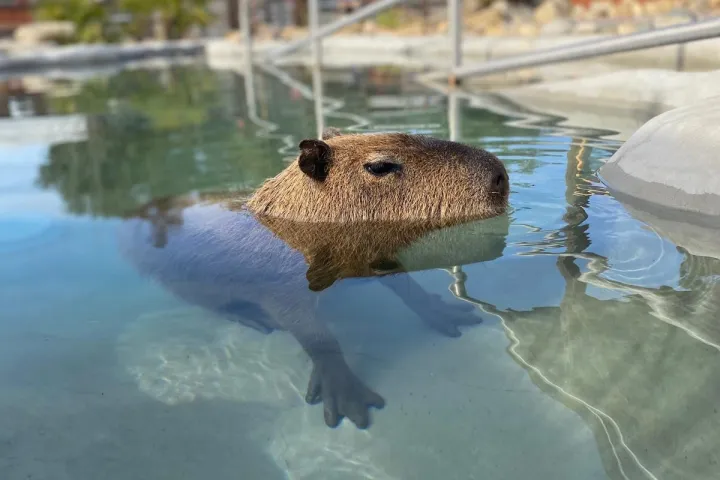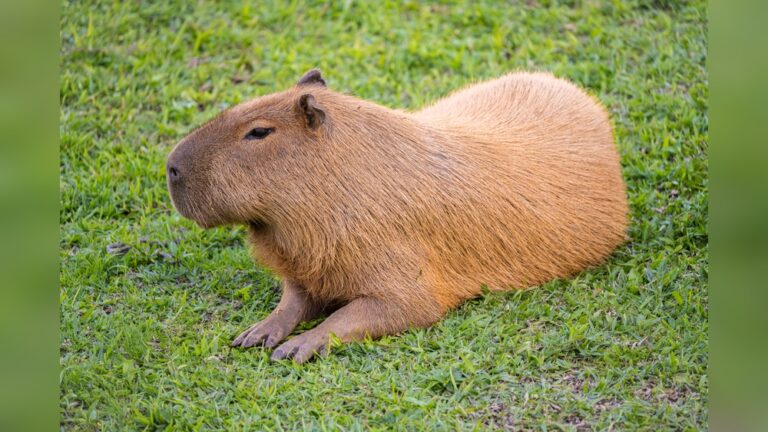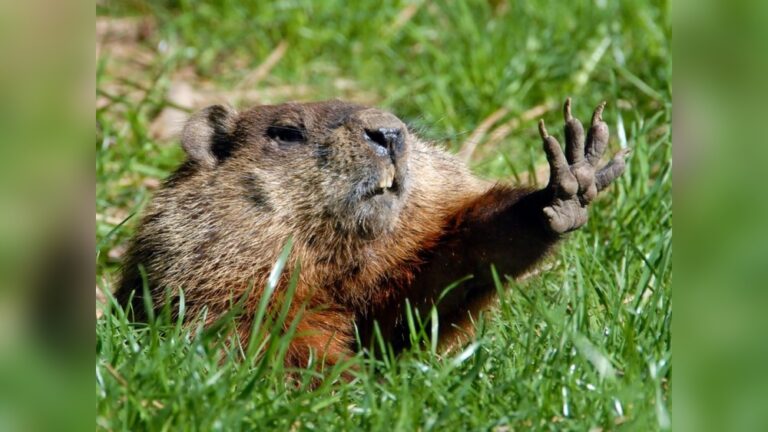Capybara Swim: Discover the Amazing Aquatic Habits of Nature’s Giant Rodent
Have you ever wondered what it feels like to swim alongside one of the friendliest creatures in the animal kingdom? Capybaras, the world’s largest rodents, are not just cute—they are natural swimmers who love the water.
If you’re curious about how these gentle giants move through the water, why they swim, and what makes their swimming skills so special, you’re in the right place. Get ready to dive into the fascinating world of capybara swim habits and discover secrets that will surprise you.
Keep reading, and you’ll see these amazing animals in a whole new light!

Credit: nurturedbynature.org
Capybara Habitat
Capybaras live in places near water. Their homes are mostly wet and green. These areas give them food and safety. Water is very important for capybaras. They spend much time swimming and resting in it.
Their habitat shapes how they live and move. Understanding where capybaras stay helps us learn about their swim skills. It also shows how they survive in the wild.
Natural Wetlands
Wetlands are soft, wet lands with many plants. Capybaras find plenty of food here. Grass and water plants grow well in wetlands. These places also protect capybaras from heat and predators. Wetlands are calm and safe for their families.
Riverbanks And Lakes
Capybaras like riverbanks and lake edges. These spots offer fresh water to drink and swim. They dig into soft soil to make nests. Riverbanks help them hide from danger. Lakes provide large areas for swimming and playing.
Adaptation To Water
Capybaras have bodies made for water life. Their eyes and nose sit high on the head. This helps them see and breathe while swimming. They have webbed feet for easy swimming. Their fur keeps them warm and dry quickly. Water is their second home.
Swimming Skills
Capybaras are excellent swimmers. Their swimming skills help them survive and find food. They use the water to escape predators and stay cool in hot weather. Their bodies are built for moving smoothly in water.
Physical Traits For Swimming
Capybaras have webbed feet that act like paddles. Their large, barrel-shaped bodies help with buoyancy. Short legs give them stability in water. Their eyes, ears, and nose sit high on the head. This position allows them to see and breathe while mostly underwater.
Diving And Underwater Movement
Capybaras can dive underwater for several minutes. They swim by moving their legs in a paddling motion. Their bodies stay streamlined to reduce water resistance. This skill helps them hide from threats and search for plants underwater.
Breath Control
Capybaras hold their breath for about five minutes. This ability lets them stay underwater safely. They take quick breaths before diving deep. Good breath control helps them avoid danger and explore underwater habitats.
Aquatic Behavior
Capybaras are the largest rodents in the world. They spend a lot of time in water. Their bodies are built for swimming. Water helps them stay safe and cool. Their aquatic behavior is key to their daily life.
Capybaras live near rivers, lakes, and wetlands. They use water for different reasons. Swimming is not just for fun. It is part of their survival and social life.
Social Swimming Patterns
Capybaras swim together in groups. They like to stay close to each other. Swimming helps them bond and communicate. Groups can have up to 20 capybaras. They move in unison through the water. This keeps the group safe and connected.
Thermoregulation In Water
Water helps capybaras cool down on hot days. Their thick fur does not dry quickly. Swimming lowers their body temperature. They often submerge their bodies, leaving only their eyes and nose out. This keeps them cool and prevents overheating.
Escape From Predators
Capybaras use water to escape danger. They dive underwater to hide from threats. Their eyes and nostrils are on top of their heads. This allows them to see and breathe while mostly submerged. Water acts as a safe refuge from land predators.
Diet And Foraging
Capybaras have a unique diet that suits their semi-aquatic lifestyle. They mainly eat plants found near or in water. Their foraging habits help them stay healthy and hydrated. Understanding their diet sheds light on how these animals thrive in their environment.
Water Plants And Algae
Capybaras feed on various water plants and algae. These plants grow in ponds, rivers, and marshes. They provide essential nutrients and fiber. Algae add minerals that support digestion. Eating these plants keeps capybaras strong and nourished.
Feeding In Aquatic Environments
Capybaras often forage while swimming or wading. They use their sharp teeth to clip plants underwater. This behavior helps them reach food others cannot. Feeding in water also cools their bodies. It is an efficient way to eat and stay safe from predators.
Reproduction And Raising Young
Capybaras are social animals that live near water. Their reproduction and care for young are closely tied to their watery environment. Understanding how they breed and protect their offspring reveals much about their behavior and survival skills.
Breeding Near Water
Capybaras choose water edges for breeding. These areas offer safety and easy access to food. Mating happens mostly during the rainy season. Females give birth to 2-8 pups after about five months. The young are born with fur and open eyes, ready to move quickly.
Protecting Offspring In Water
Water provides a natural shield for capybara families. Mothers and other group members watch over pups closely. They teach the young to swim soon after birth. Swimming helps pups escape predators. Groups stay close to water to keep pups safe. This protection increases pups’ chances of survival.

Credit: www.youtube.com
Capybaras And Humans
Capybaras have a unique connection with humans. These gentle creatures live near water and often share space with people in parks and nature reserves. Their calm nature makes them easy to observe and appreciate. This bond between capybaras and humans opens many doors for education and enjoyment.
Ecotourism And Wildlife Observation
Ecotourism brings visitors to see capybaras in their natural habitat. People enjoy watching capybaras swim and relax by the water. Tour guides teach about their behavior and role in the ecosystem. This wildlife observation helps raise respect for nature. Visitors learn how to protect animals and their homes.
Conservation Efforts
Conservation programs focus on protecting capybaras and their environment. Many efforts aim to preserve wetlands and rivers. These habitats are vital for capybaras to thrive. Local communities join in protecting these animals. Education and support help reduce hunting and habitat loss.

Credit: web.stanford.edu
How Smart Pets Lover Can Help You with Capybara Swim
Learning from Capybara Swim: Practical Insights for Pet Enthusiasts
Understanding how capybaras navigate their watery habitats offers more than just curiosity—it provides valuable lessons in animal behavior and care. Observing their natural swimming skills reveals how important water access is for their well-being, linking closely with their diet and foraging habits which often occur near aquatic environments. For those fascinated by capybaras or considering their care, recognizing these connections helps foster a more enriched and responsible approach to pet ownership.
- Encourage natural behaviors by providing safe water areas, mimicking their habitat.
- Support their diet with fresh vegetation, reflecting their foraging patterns near water.
- Appreciate the role of swimming in their social and reproductive lives.
At Smart Pets Lover, we believe every pet parent benefits from understanding these intricate behaviors—because every wag, purr, and splash tells a story. For further guidance on capybara care or aquatic animal behavior, reaching out to wildlife specialists or local animal care organizations can be a helpful next step.
Frequently Asked Questions
Why Do Capybaras Love To Swim?
Capybaras are semi-aquatic mammals. They swim to regulate body temperature, escape predators, and find food. Water provides safety and comfort for them in the wild.
How Long Can A Capybara Stay Underwater?
Capybaras can hold their breath underwater for up to five minutes. This ability helps them hide from threats and search for aquatic plants.
What Habitats Do Capybaras Swim In?
Capybaras live near lakes, rivers, swamps, and marshes. They prefer areas with abundant water to support their swimming and feeding habits.
Are Capybaras Good Swimmers?
Yes, capybaras are excellent swimmers. Their webbed feet and streamlined bodies allow them to move swiftly and gracefully in water.
Conclusion
Capybaras love to swim and spend time in water. Swimming helps them stay cool and safe. They move easily with their webbed feet. Watching capybaras swim shows how calm and gentle they are. Their swimming skills help them live well in nature.
Next time you learn about animals, remember capybaras enjoy water a lot. Simple creatures with great swimming talents. A quiet reminder of nature’s peaceful side.






